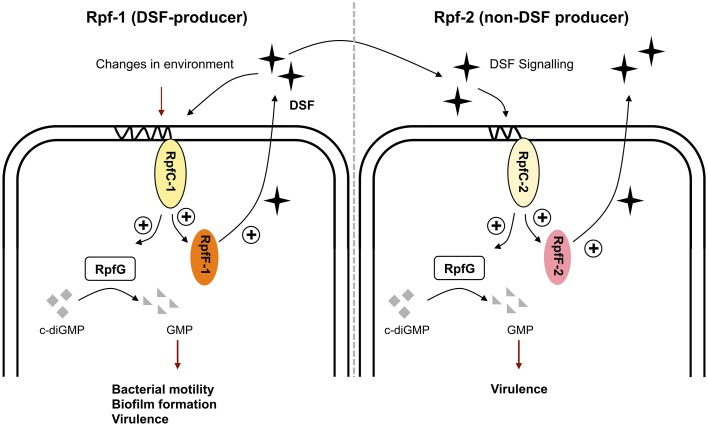Figure 5.
Schematic model of the DSF-QS proposed for S. maltophilia rpf-1 (DSF-producer) and rpf-2 (non-DSF producer) variant strains. Rpf-1: RpfC-1 (containing 10 TMR) allows basal activation of RpfF-1, with subsequent DSF production, when reaching high cellular density. Changes in the environment including temperature, nutrients and presence of extracellular fatty acids modulate DSF production. The DSF-QS system controls bacterial motility, biofilm dispersion, and virulence. Rpf-2: RpfC-2 (containing 5 TMR) does not allow basal DSF production. None of the mentioned factors stimulate DSF production in these variant strains. Activation of RpfF-2 and subsequent DSF production happens only upon detection of DSF itself, likely coming from neighbor DSF-producer strains (e.g., Xcc or S. maltophlia rpf-1). In this situation, rpf-2 strains regulate synergistically virulence capacity and DSF production in co-infection with rpf-1 variant strains.

